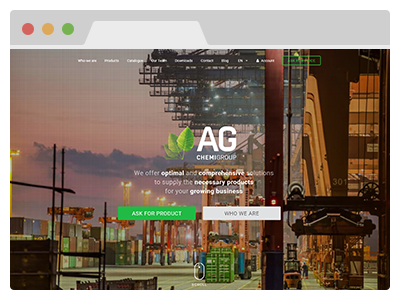 How to Succeed with Seaweed in Feed
06. 06. 2018
#Feed industry
How to Succeed with Seaweed in Feed
06. 06. 2018
#Feed industry

Recently, seaweed has been hitting the headlines in feed industry circles. As a feed additive which needs only seawater and sunlight to grow, livestock farmers, animal nutritionists, and feed researchers are discovering the benefits of this alternative feed raw material. But what breakthroughs are being made, and is seaweed a viable, and commercially available feed additive? How can agribusiness succeed with seaweed?
Such is the interest in seaweed, that the BBC recently reported on the Danish company Seamore Food, which has begun production of seaweed pasta and ‘bacon’ for human consumption.
Seaweed pasta from Seamore Food
Meanwhile, researchers in California have found that seaweed added to cattle feed is able to drastically reduce methane emissions. While the advantages to the planet of doing this may be obvious, animal feed manufacturers may not be so convinced. However, they should consider that law changes may soon make cattle farmers responsible for their cattle’s environmental impact, as has already begun in America. As the University of California website reports, “In an effort to reduce greenhouse gas emissions, California legislators recently adopted regulations requiring dairy farmers and other producers to cut methane emissions 40 percent by 2030.”
To combat cattle emissions, nutritionists have been experimenting with various feed additives for many years. For example, a team of researchers from England found success with curry supplements in the lab with simulated cattle digestive systems. But when they tested it on live cattle, they found that cows simply don’t like the taste of curry.
But now a more palatable breakthrough has been made with feed researchers finding amazing benefits from feeding cattle seaweed. As the feed industry journal, AllAboutFeed reported at the end of May 2018, “Early results from research at the University of California, Davis, indicate that just a touch of the ocean algae in cattle feed could dramatically cut greenhouse gas emissions from California’s 1.8 million dairy cows.”
The University still has some way to go, as to date the tests have been carried out on only 12 Holstein cows, but the results are promising. As the UC Davis website makes clear, “During lab tests last year, researchers in Australia found that just 2 percent seaweed in cattle feed could reduce methane emissions by 99 percent. The seaweed apparently inhibits an enzyme that contributes to methane production.”
A small amount of macro red algae, a type of seaweed pictured here, is mixed with molasses and cattle feed in a research project by UC Davis Professor Ermias Kebreab.
“So far we are seeing substantial emission reductions. This could help California’s dairy farmers meet new methane-emission standards and sustainably produce the dairy products we need to feed the world,” adds animal science professor and project lead Ermias Kebreab.
You can learn more about this discovery on this YouTube video.
This story followed on from the research in using seaweed as a feed additive to improve piglet digestive health. As the industry journal Pig Progress reported in April 2017, “The interest in using marine macro-algae to improve pig health and performance, stems from the different biological activities that macro-algae has on animal physiology. These biological activities, including antibacterial activity, antiviral activity, and increased mucus secretion, are caused by different types of algae sulfated polysaccharides found within macro-algae.”
The report continues by noting that a new product, “that combines marine (algae-derived) sulphated polysaccharide and clay (specifically processed to increase intestinal coating capacity) for use with nursing pigs [was tested]. The trial was conducted in a barn on 22 litters of pigs diagnosed with Porcine Epidemic Diarrhoea virus [one of the most detrimental diseases in the farrowing unit, causing nearly 95% mortality in nursing piglets]. The product was administered to 11 litters, and the remaining 11 litters were not given this product to serve as a control. Piglets were weaned at 21 days of age. Compared to the control litters, piglets provided the strategy were faster growing (0.19 kg/d vs 0.15 kg/d, respectively) and heavier at weaning (5.5 kg vs 4.7 kg, respectively). Furthermore, the product decreased piglet mortality by 47% compared to the control litters.”
At present the most common method of reducing piglet diarrhoea and improving pig gut health is by using antibiotics, yet seaweed may be a more ecological and cheaper alternative.
Other researchers have already found a use for algae as a feed raw material, one that doesn’t need access to the sea. As AG CHEMI GROUP reported in March 2018, “Algae (as a nutritional, affordable, and sustainable feed additive) is set to transform the feed industry. The algae require nutrients to grow, so they are fed the excess nutrients from anaerobically digested food and farm waste. This will make the raw material for the feed ingredient both low cost and sustainable.”
YOU CAN READ MORE ON THIS TOPIC HERE
Another reason for the sudden interest in seaweed in feed, is that despite the scientific evidence of the power of seaweed there has been little commercial success in feed…until now. This is because a supplier of seaweed feed additives is currently experiencing considerable company growth and creating a new market in the feed additive industry.
The firm is called Ocean Harvest Technology, who up until recently were based solely (and successfully) in Vietnam. As Graham Ellis, Ocean Harvest’s CEO said recently in an interview with industry journal, Feed Navigator, “We have a huge supply chain running in South East Asia and probably one of the largest seaweed to animal feed plants there is.” But now the firm has opened a European base in Galway, Ireland, have moved there management headquarters to Fareham in England, and have recently announced an agreement to a European distributor.
The reasons for the success of seaweed as a feed additive are clear if the company website is to be believed. It explains how, “The products combine multiple species of brown, green and red microalgae (seaweed) … that have been shown to improve feed intake, increasing performance, weight gain, and fertility in livestock while allowing producers to reduce or remove antibiotic growth promotors.” As a result, “Ocean Harvest Technology’s products have been gaining traction in the US and Europe, particularly in the Swine and Bovine segments,” adds Ellis.
Meanwhile, Kebreab and his Davis University team are continuing their work on seaweed feed additives, not only to help the feed industry and feed producers, but also to help poorer livestock farmers get more from their cattle. For example, they recently received a $500,000 grant to help improve sustainable livestock production in Ethiopia and Burkina Faso, where dairy cattle produce 5 to 10 litres of milk per day compared to the 45 litres that cows in California can produce.
As Kebreab notes, “By improving the quality and quantity of dairy production in developing countries, we help families rise from poverty and malnutrition, and also reduce the carbon footprint of cattle worldwide.”
To increase milk production four-fold may take much more than a seaweed feed additive. But if feed researchers and seaweed additive suppliers such as Ocean’s Harvest are successful, then not only will animal health, growth, and production increase, but it will also be evident that there is a need for seaweed in feed.
Client Zone – Be in Touch with All the Important Information
Take the opportunity to register in our client zone to find complete product specifications and latest updates on our offers.
Photo credits: UCDavis, YouTube, ScienceAlert, HubbellsHogHeaven, & OceansHarvest
